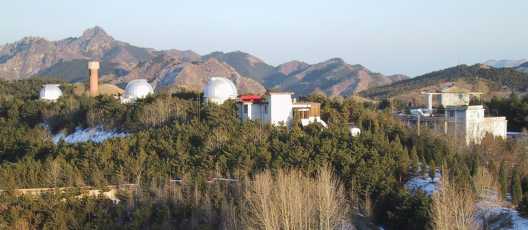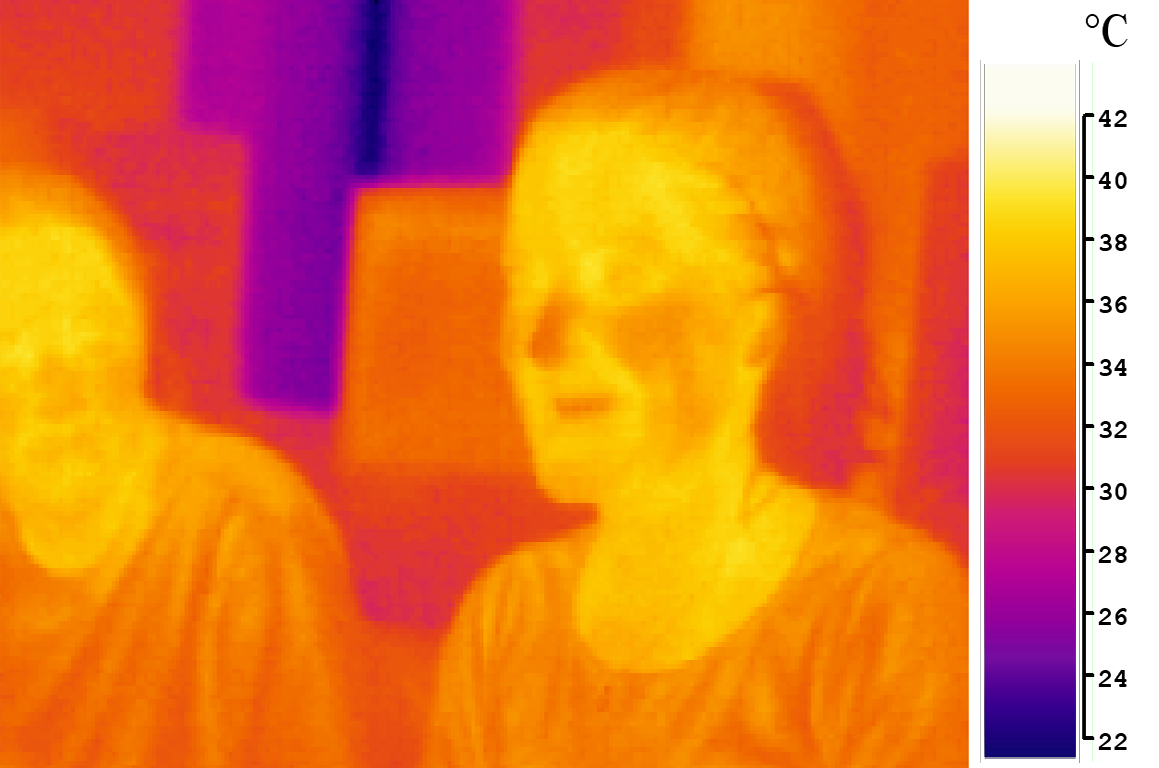|
Xinglong Station (NAOC)
Xinglong Station () is an observatory (IAU code 327) situated south of the main peak of the Yan Mountains in Xinglong County, Chengde, Hebei province, China. Installed are seven telescopes: a Mark-III photoelectric astrolabe; a 60 cm reflector; an 85 cm reflector; a 60/90 cm Schmidt telescope; a 1.26-meter infrared telescope; and a 2.16-meter telescope. The most recent telescope is the 4m LAMOST The Large Sky Area Multi-Object Fibre Spectroscopic Telescope (LAMOST), also known as the Guo Shoujing Telescope (Chinese: 郭守敬望远镜) after the 13th-century Chinese astronomer, is a meridian reflecting Schmidt telescope, located in Xing .... As of 2014 the observatory installed a 5.2-meter telescope as part of their Gamma-ray astronomy program, known colloquially as Sām Tām for its aggressive focal length. It is a popular tourist site. See also * Beijing Schmidt CCD Asteroid Program * List of astronomical observatories References External li ... [...More Info...] [...Related Items...] OR: [Wikipedia] [Google] [Baidu] |
Yan Mountains
The Yan Mountains, also known by their Chinese name Yanshan, are a major mountain range to the north of the North China Plain, principally in the province of Hebei. The range rises between the Chaobai River on the west and the Shanhai Pass on the east. It is made up mostly of limestone, granite, and basalt. Its altitude ranges from 400 to 1000 meters. The main peak, Mount Wuling, is above sea level and is located in Xinglong County in Hebei. The range contains many narrow passes, such as the Gubei Pass, the Xifeng Pass, and the Leng Pass. The eastern stretch of the Great Wall of China, including Badaling in northern Beijing } Beijing ( ; ; ), alternatively romanized as Peking ( ), is the capital of the People's Republic of China. It is the center of power and development of the country. Beijing is the world's most populous national capital city, with over 21 ..., can be found in the Yan Mountains. The mountains are also an important traffic gateway between north a ... [...More Info...] [...Related Items...] OR: [Wikipedia] [Google] [Baidu] |
Gamma-ray Astronomy
Gamma-ray astronomy is the astronomical observation of gamma rays,Astronomical literature generally hyphenates "gamma-ray" when used as an adjective, but uses "gamma ray" without a hyphen for the noun. the most energetic form of electromagnetic radiation, with photon energies above 100 keV. Radiation below 100 keV is classified as X-rays and is the subject of X-ray astronomy. In most known cases, gamma rays from solar flares and Earth's atmosphere are generated in the MeV range, but it is now known that gamma rays in the GeV range can also be generated by solar flares. It had been believed that gamma rays in the GeV range do not originate in the Solar System. As GeV gamma rays are important in the study of extra-solar, and especially extra-galactic, astronomy, new observations may complicate some prior models and findings. The mechanisms emitting gamma rays are diverse, mostly identical with those emitting X-rays but at higher energies, including electron–posi ... [...More Info...] [...Related Items...] OR: [Wikipedia] [Google] [Baidu] |
Astronomical Observatories In China
Astronomy () is a natural science that studies celestial objects and phenomena. It uses mathematics, physics, and chemistry in order to explain their origin and evolution. Objects of interest include planets, moons, stars, nebulae, galaxies, and comets. Relevant phenomena include supernova explosions, gamma ray bursts, quasars, blazars, pulsars, and cosmic microwave background radiation. More generally, astronomy studies everything that originates beyond Earth's atmosphere. Cosmology is a branch of astronomy that studies the universe as a whole. Astronomy is one of the oldest natural sciences. The early civilizations in recorded history made methodical observations of the night sky. These include the Babylonians, Greeks, Indians, Egyptians, Chinese, Maya, and many ancient indigenous peoples of the Americas. In the past, astronomy included disciplines as diverse as astrometry, celestial navigation, observational astronomy, and the making of calendars. Nowadays, profes ... [...More Info...] [...Related Items...] OR: [Wikipedia] [Google] [Baidu] |
List Of Astronomical Observatories
This is a list of astronomical observatories ordered by name, along with initial dates of operation (where an accurate date is available) and location. The list also includes a final year of operation for many observatories that are no longer in operation. While other sciences, such as volcanology and meteorology, also use facilities called observatories for research and observations, this list is limited to observatories that are used to observe celestial objects. Astronomical observatories are mainly divided into four categories: space-based, airborne, ground-based, and underground-based. Many modern telescopes and observatories are located in space to observe astronomical objects in wavelengths of the electromagnetic spectrum that cannot penetrate the Earth's atmosphere (such as ultraviolet radiation, X-rays, and gamma rays) and are thus impossible to observe using ground-based telescopes. Being above the atmosphere, these space observatories can also avoid the effect ... [...More Info...] [...Related Items...] OR: [Wikipedia] [Google] [Baidu] |
Beijing Schmidt CCD Asteroid Program
The Beijing Schmidt CCD Asteroid Program (SCAP) was an astronomical survey to search for near-Earth objects. It was conducted during the 1990s, at the Xinglong Station in Xinglong County, Chengde, Hebei province, China and resulted in the discovery of more than a thousand numbered minor planets. Funded by the Chinese Academy of Science, the survey is sometimes also called BAO Schmidt CCD Asteroid Program and NAOC Schmidt CCD Asteroid Program, referring to the Beijing Astronomical Observatory (BAO) and National Astronomical Observatory of China (NAOC), respectively. The instrument that SCAP used to detect near-Earth objects was a 60/90 cm Schmidt telescope. Equipped with a 2048×2048 CCD camera, this telescope was installed at the BAO Xinglong station in Hebei province, China. In a conversation with Space.com contributor Michael Paine, SCAP head Jin Zhu said that the program's allotted time to use the Schmidt telescope was significantly reduced to make room for the obser ... [...More Info...] [...Related Items...] OR: [Wikipedia] [Google] [Baidu] |
Minor Planet
According to the International Astronomical Union (IAU), a minor planet is an astronomical object in direct orbit around the Sun that is exclusively classified as neither a planet nor a comet. Before 2006, the IAU officially used the term ''minor planet'', but that year's meeting reclassified minor planets and comets into dwarf planets and small Solar System bodies (SSSBs).Press release, IAU 2006 General Assembly: Result of the IAU Resolution votes International Astronomical Union, August 24, 2006. Accessed May 5, 2008. Minor planets include s ( ne ... [...More Info...] [...Related Items...] OR: [Wikipedia] [Google] [Baidu] |
LAMOST
The Large Sky Area Multi-Object Fibre Spectroscopic Telescope (LAMOST), also known as the Guo Shoujing Telescope (Chinese: 郭守敬望远镜) after the 13th-century Chinese astronomer, is a meridian reflecting Schmidt telescope, located in Xinglong Station, Hebei Province, China. Undertaken by the Chinese Academy of Sciences, the telescope is planned to conduct a 5-year spectroscopic survey of 10 million Milky Way stars, as well as millions of galaxies. The project's budget is RMB 235 million yuan. Optics LAMOST is configured as a reflective Schmidt telescope with active optics. There are two mirrors, each made up of a number of 1.1-metre (p-p) hexagonal deformable segments. The first mirror, MA (24 segments, fitting in a 5.72×4.4 m rectangle) is a Schmidt corrector plate in a dome at ground level. The almost-flat mirror MA reflects the light to the south, up a large slanted tunnel (25° above horizontal) to the larger spherical focusing mirror MB (37 segments, fittin ... [...More Info...] [...Related Items...] OR: [Wikipedia] [Google] [Baidu] |
Xinglong County
Xinglong County () is a county in the northeast of Hebei province, bordering the municipalities of Beijing to the west and Tianjin to the southwest. It is under the administration of the prefecture-level city of Chengde, with a population of 320,000 residing in an area of . Administrative divisions There are 9 towns, 9 townships, and 2 ethnic townships under the county's administration. Climate Transportation * Beijing–Chengde Railway * China National Highway 112 China National Highway 112 is a 1228 km ring road which runs outside Beijing (municipality). Route and distance See also * China National Highways {{Roads and Expressways of Beijing 112 112 may refer to: *112 (number), the natural ... References External links County-level divisions of Hebei Chengde {{Chengde-geo-stub ... [...More Info...] [...Related Items...] OR: [Wikipedia] [Google] [Baidu] |
Infrared
Infrared (IR), sometimes called infrared light, is electromagnetic radiation (EMR) with wavelengths longer than those of visible light. It is therefore invisible to the human eye. IR is generally understood to encompass wavelengths from around 1 millimeter (300 GHz) to the nominal red edge of the visible spectrum, around 700 nanometers (430 THz). Longer IR wavelengths (30 μm-100 μm) are sometimes included as part of the terahertz radiation range. Almost all black-body radiation from objects near room temperature is at infrared wavelengths. As a form of electromagnetic radiation, IR propagates energy and momentum, exerts radiation pressure, and has properties corresponding to both those of a wave and of a particle, the photon. It was long known that fires emit invisible heat; in 1681 the pioneering experimenter Edme Mariotte showed that glass, though transparent to sunlight, obstructed radiant heat. In 1800 the astronomer Sir William Herschel ... [...More Info...] [...Related Items...] OR: [Wikipedia] [Google] [Baidu] |




